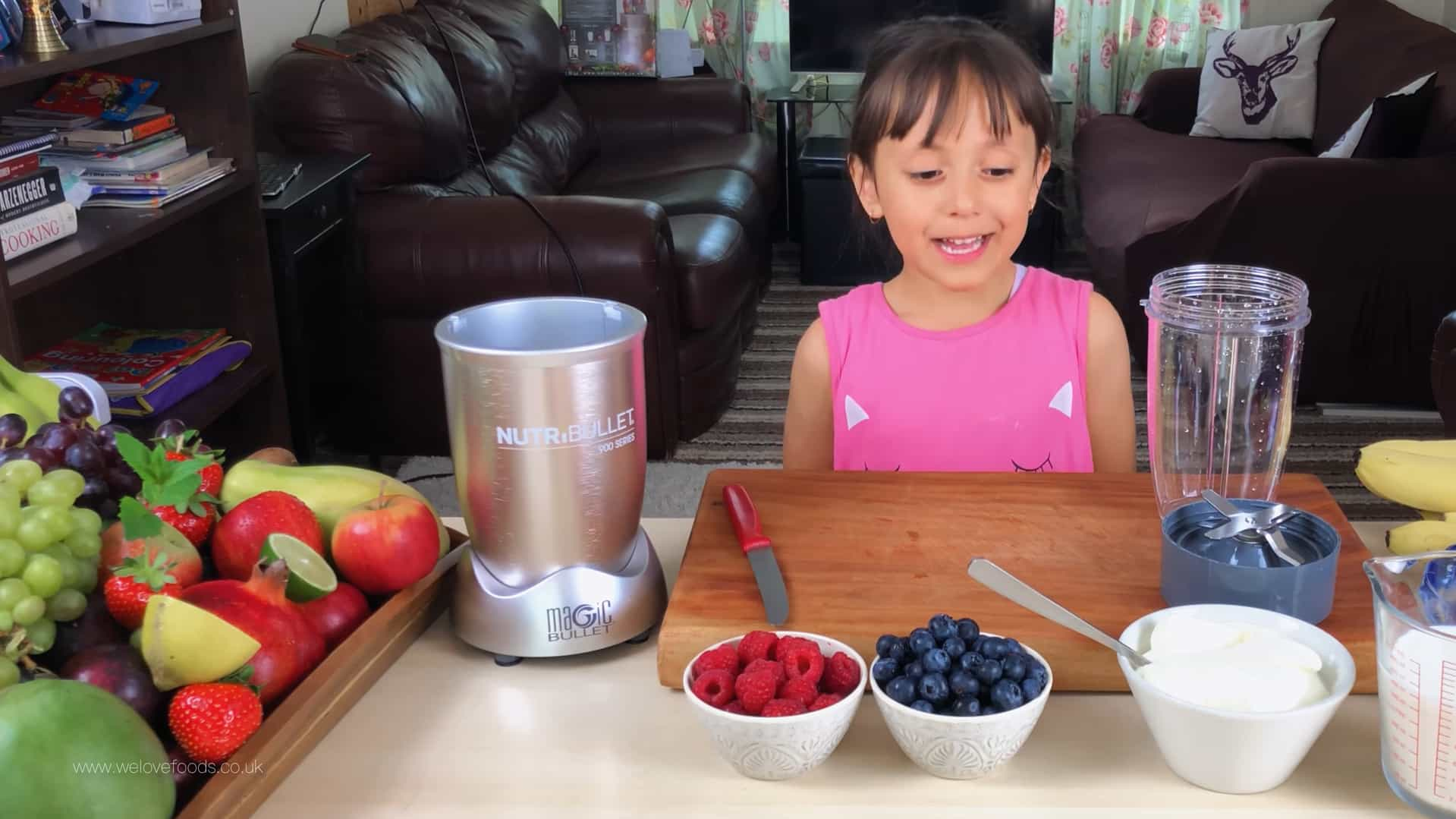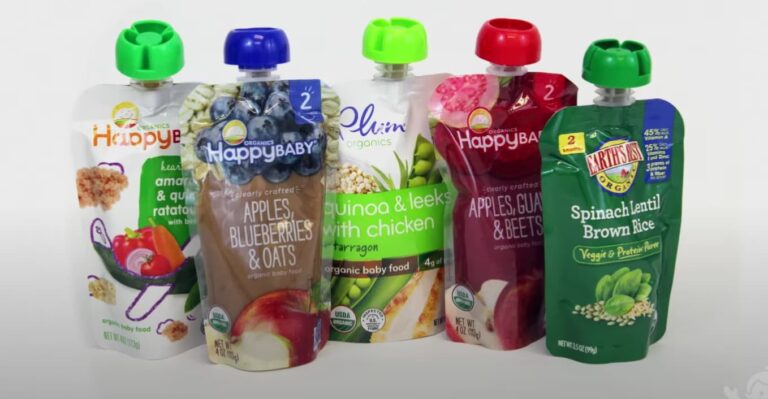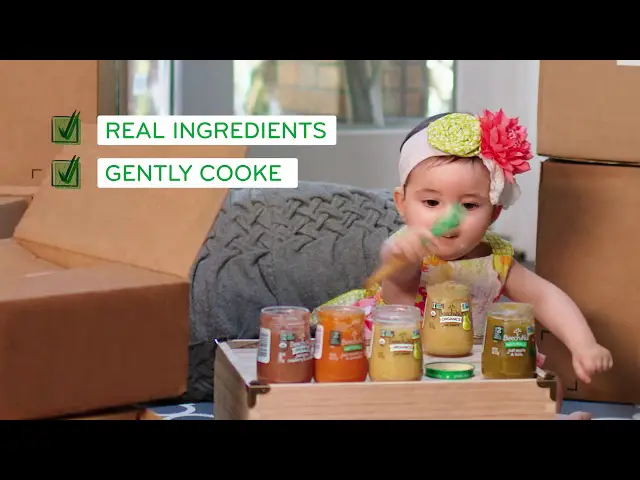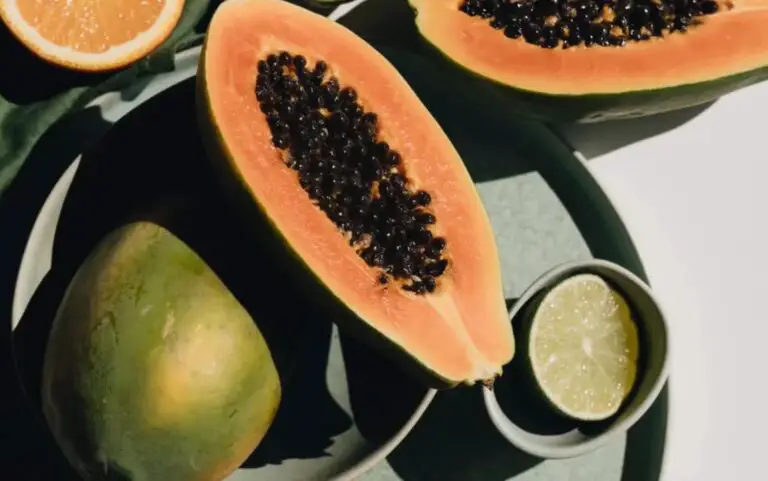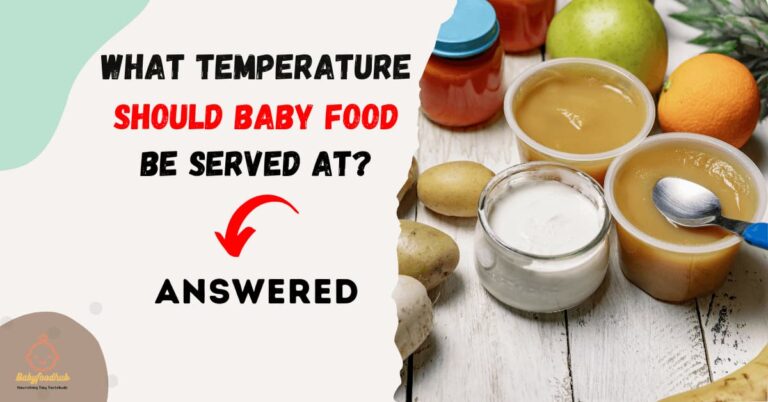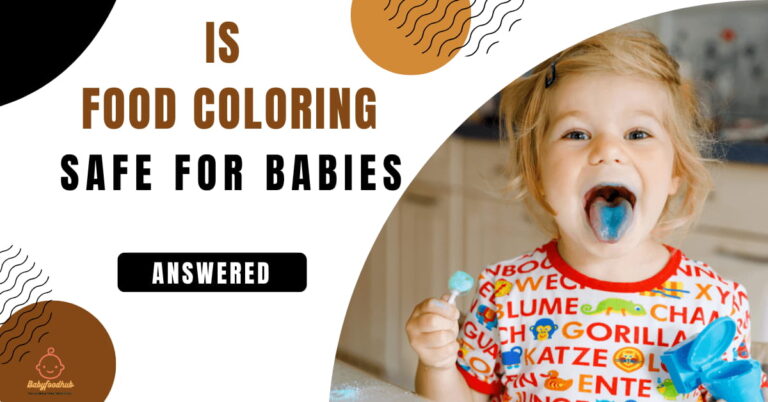What to Avoid When Making Smoothies for Baby?
Avoid adding honey, cow’s milk, citrus fruits, and excessive sweeteners when making smoothies for babies. Making smoothies for your baby is a great way to introduce them to a variety of fruits and vegetables while providing them with essential nutrients.
‘Making food for a baby is like being both a chef and a guardian angel, blending love with each spin of the spoon. Now, imagine turning fruits and veggies into a fun, slurpy adventure! That’s where smoothies come into play. They can be a rainbow of nutrients in a cup, making mealtime both playful and nourishing. But wait, not all smoothies are created equal, especially when it comes to our tiny tots. Some ingredients might do a happy dance in a grown-up’s tummy but could have a baby’s tummy singing the blues. This blog is like a friendly chat over a cup of smoothie, where we’ll share some oopsie-daisies to avoid when whisking up a smoothie concoction for your baby. Our mission is to help loving parents like you know what to dodge so that the smoothie cup holds a happy meal, not a trouble brew. We’ll stroll through some common missteps and learn how to swerve around them, ensuring each sip your baby takes is a journey to a healthy, giggly tummy. So, with a splash of care and a sprinkle of awareness, let’s blend away into the colorful whirl of baby smoothies, making sure the little one’s sip is as safe and yummy as a warm cuddle!
1. Unsuitable Ingredients
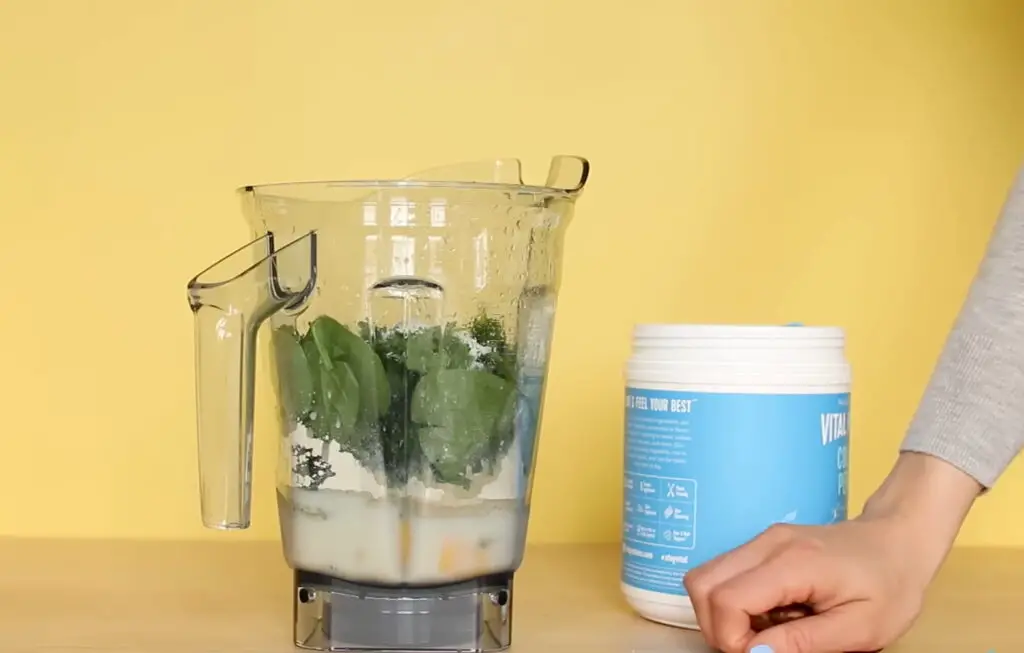
When it comes to making smoothies for your little one, it’s important to be mindful of the ingredients you include. Certain ingredients can be unsuitable for babies and may pose risks to their health. In this section, we will discuss some of the key ingredients to avoid when making smoothies for your baby.
1. Using honey as a sweetener
Although honey is a natural sweetener that many adults enjoy, it is not safe for babies under the age of one. Honey may contain bacteria called Clostridium botulinum, which can lead to a serious illness known as infant botulism. This bacterium can multiply in a baby’s immature digestive system and cause muscle weakness, difficulty breathing, and even paralysis. It is essential to refrain from using honey, whether as a sweetener or as an ingredient in smoothies until your baby turns one year old.
2. Incorporating high-risk allergens like nuts
Introducing common allergens to your baby’s diet is a crucial step in their overall development. However, it’s important to be mindful of the potential risks associated with high-risk allergens like nuts. Whole nuts and nut butter should be avoided in smoothies for babies, as they can pose a choking hazard. Additionally, some infants may have allergies to nuts, which can lead to severe allergic reactions. It’s advisable to consult with your pediatrician before introducing nuts or nut products into your baby’s diet, including in their smoothies.
3. Adding unhealthy additives such as refined sugar
While it may be tempting to add a dose of sweetness to your baby’s smoothie, it’s crucial to avoid using refined sugar. Consuming excessive amounts of refined sugar can be harmful to your baby’s health and may contribute to various health issues such as tooth decay, obesity, and diabetes later in life. Rather than relying on unhealthy additives, opt for natural sweeteners like mashed ripe bananas, unsweetened applesauce, or a small amount of unsweetened yogurt to enhance the flavor of your baby’s smoothie.
In conclusion, when making smoothies for your little one, it’s crucial to avoid unsuitable ingredients that can compromise their health. Refrain from using honey as a sweetener until your baby is at least one year old, as it can cause infant botulism. Be cautious with high-risk allergens like nuts, as they can pose a choking hazard and lead to severe allergic reactions. Lastly, steer clear of unhealthy additives such as refined sugar and opt for natural alternatives for sweetening your baby’s smoothie. By being mindful of the ingredients you include, you can ensure that your baby’s smoothies are not only delicious but also safe and nutritious.
2. Unwashed Fruits And Vegetables
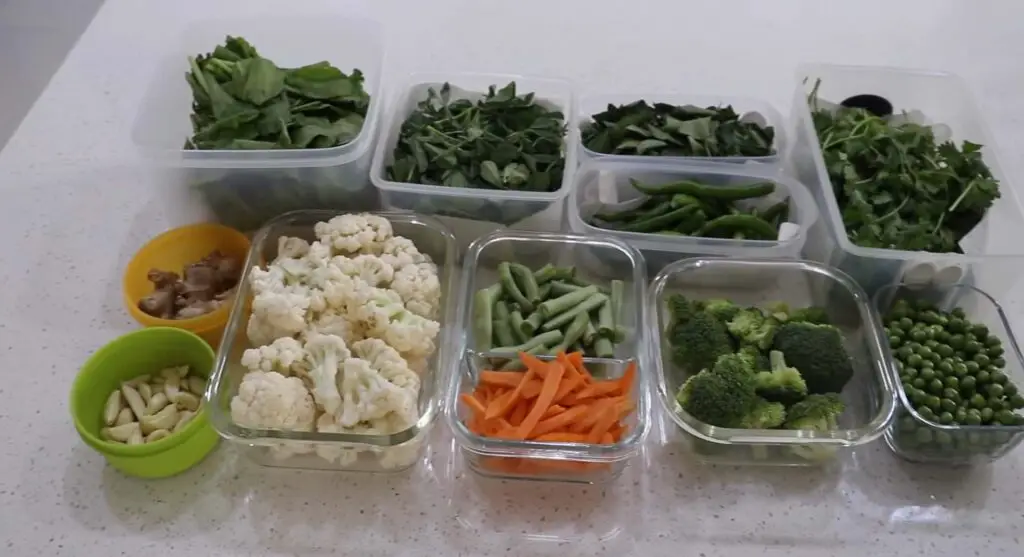
When it comes to making smoothies for your baby, ensuring the highest level of safety and nutrition is crucial. One common mistake that parents often overlook is the importance of washing fruits and vegetables before using them in smoothie recipes. While it may seem like a small detail, neglecting to wash produce thoroughly can have potential risks for your baby’s health.
Importance Of Washing Produce Thoroughly
Washing produce thoroughly is an essential step in preparing smoothies for your baby. It helps eliminate dirt, pesticides, and other harmful bacteria that may be present on the surface of fruits and vegetables. By removing these contaminants, you can significantly reduce the potential risks of your baby ingesting harmful substances.
When washing fruits and vegetables for your baby’s smoothies, remember to use clean, running water. Gently rub the produce under the water stream, ensuring that all surfaces are thoroughly cleaned. For firmer fruits and vegetables, such as apples or carrots, you can use a vegetable scrub brush to remove any stubborn dirt or residue.
Potential Risks Of Consuming Unwashed Fruits And Vegetables
Consuming unwashed fruits and vegetables can expose your baby to various potential risks. These include:
- Illness from Bacterial Contamination: Unwashed produce can carry harmful bacteria like E. coli or Salmonella, which can cause serious illness if ingested. Babies have delicate immune systems, making them more vulnerable to such infections.
- Pesticide Exposure: Commercially grown fruits and vegetables are often sprayed with pesticides to protect against pests. While these chemicals are regulated, residue may remain on the surface. Washing produce helps reduce pesticide exposure for your baby.
- Allergic Reactions: Some babies may have allergies or sensitivities to specific fruits or vegetables. Thoroughly washing produce can help remove potential allergens and reduce the risk of an allergic reaction.
In addition to washing fruits and vegetables, it’s also important to follow proper food safety guidelines when handling and storing produce. Make sure to store fresh produce separately from raw meats and clean all utensils, cutting boards, and blenders used in preparing smoothies for your baby.
By prioritizing the washing of fruits and vegetables for your baby’s smoothies, you can ensure optimal safety and provide the best nutrition for your little one. Remember, a few extra minutes of preparation can go a long way in safeguarding your baby’s health.
3. Improperly Prepared Ingredients
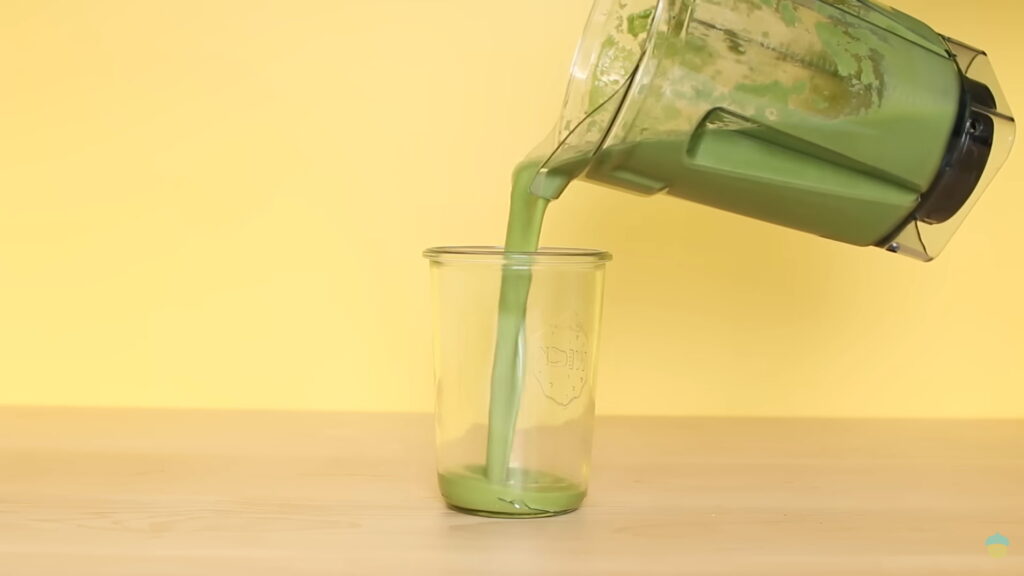
When it comes to making smoothies for your baby, the quality of ingredients is crucial for their health and well-being. Improperly prepared ingredients can pose risks such as choking hazards, compromised nutritional value, and even foodborne illnesses. To ensure that your baby enjoys a safe and nutritious smoothie, it is important to pay attention to how you prepare the ingredients. In this section, we will discuss the improper techniques for preparing ingredients and the importance of cutting fruits and vegetables into appropriate sizes.
Improper Techniques For Preparing Ingredients
Properly preparing the ingredients is essential to maintain the nutritional value and safety of the smoothie. Here are a few improper techniques to avoid:
- Poor rinsing: Fruits and vegetables should be thoroughly rinsed to remove any dirt, pesticides, or contaminants. Failing to rinse them properly can expose your baby to harmful substances.
- Overcooking: Overcooking fruits and vegetables can lead to the loss of essential nutrients. It is important to cook them just enough to make them soft and easily blendable.
- Unwashed hands: Always ensure that your hands are clean before handling food. Unclean hands can introduce bacteria and other harmful microorganisms into the smoothie.
The Importance Of Cutting Fruits And Vegetables Into Appropriate Sizes
Chopping fruits and vegetables into appropriate sizes is crucial, especially when making smoothies for babies. Here’s why:
- Choking hazards: Large chunks or whole pieces of fruits and vegetables can pose a choking risk for your baby. It is important to cut them into small, manageable pieces to prevent any potential accidents.
- Easier digestion: Cutting fruits and vegetables into appropriate sizes allows your baby’s digestive system to process them more easily. This ensures better absorption of nutrients and reduces the chances of digestive discomfort.
- Blending consistency: When ingredients are cut into uniform sizes, it becomes easier for them to blend smoothly, resulting in a more enjoyable and homogeneous texture.
Remember, your baby’s safety and well-being should always be a priority when preparing smoothies. Taking the time to properly prepare ingredients and adhere to recommended techniques will not only ensure a nutritious drink for your little one but also give you peace of mind.
4. Excessive Sugar Content
When preparing smoothies for your little one, it’s crucial to be mindful of the sugar content. Excessive sugar in baby smoothies can have detrimental effects on their health and development. In this section, we will explore the dangers of high sugar content in baby smoothies and provide some useful tips on reducing or avoiding added sugars altogether.
The Dangers Of High Sugar Content In Baby Smoothies
High sugar content in baby smoothies can have several negative impacts on your little one’s health. Here are some dangers you should be aware of:
- 1. Risk of tooth decay: Excessive sugars can lead to dental problems, such as cavities, in your baby’s developing teeth.
- 2. Poor nutrition: Too much sugar in smoothies can displace other nutrient-rich foods, leading to an imbalanced diet and potential nutrient deficiencies.
- 3. Increased risk of obesity: Regular consumption of high-sugar smoothies can contribute to weight gain and increase the risk of obesity in babies.
- 4. Unhealthy eating habits: Introducing excessive sugar at an early age can create a preference for sweet flavors, making it more challenging to encourage healthy eating habits in the future.
Tips For Reducing Or Avoiding Added Sugars:
To ensure your baby enjoys nutritious and low-sugar smoothies, follow these helpful tips:
- 1. Choose naturally sweet ingredients: Opt for fruits like ripe bananas, berries, or unsweetened applesauce as natural sweeteners in your baby’s smoothies.
- 2. Avoid sweetened yogurts and juices: Opt for plain yogurt and freshly squeezed juices, avoiding those with added sugars.
- 3. Read labels carefully: When purchasing packaged ingredients, ensure they do not contain any added sugars or artificial sweeteners.
| Ingredient | Sugar Content (per 100g) |
| Strawberry yogurt | 15g (contains added sugars) |
| Plain yogurt | 4g (no added sugars) |
| Fruit juice with added sugars | 10g (contains added sugars) |
| Freshly squeezed orange juice | 8g (no added sugars) |
- 4. Dilute fruit juices: If using fruit juices, dilute them with water to reduce their overall sugar concentration.
- 5. Explore alternative flavors: Consider adding vegetables like spinach or avocados to your baby’s smoothies to introduce new flavors and reduce reliance on sweet ingredients.
- 6. Gradually reduce sugar: If your baby is used to sweeter smoothies, gradually reduce the amount of added sugar over time. Their taste preferences will adjust accordingly.
5. Introducing Potential Choking Hazards
Making smoothies for your baby? Be cautious of potential choking hazards. Avoid including ingredients like nuts, whole berries, chunks of fruits, and seeds. Stick to soft and pureed options to ensure a safe and enjoyable smoothie experience for your little one.
5. Identifying Potential Choking Hazards In Smoothies
When preparing smoothies for your baby, it’s important to be aware of potential choking hazards that may be present in certain ingredients. Babies have delicate airways and may not have fully developed their choking reflex, making them more susceptible to choking on small or hard objects. To ensure your baby’s safety, follow these guidelines in identifying and avoiding potential choking hazards when making smoothies:
Identifying Potential Choking Hazards In Smoothies:
Before we delve into the modification of ingredients, let’s first identify the potential choking hazards that may be lurking in your baby’s smoothie:
- Fruit Seeds: Certain fruits like berries contain small seeds that can pose a choking risk. Be sure to remove these seeds before adding the fruit to your baby’s smoothie.
- Nut Butter: While nut butter can be a nutritious addition to smoothies, it’s important to use caution. A dollop of nut butter can easily stick to the roof of your baby’s mouth, potentially causing choking. Spread the nut butter evenly on a piece of toast or mix it thoroughly into the smoothie for safer consumption.
- Pieces of Hard Fruits or Vegetables: Large chunks of hard fruits or vegetables, such as apples or carrots, can be difficult for your baby to chew and pose a choking hazard. Ensure that all fruits and vegetables are cut into small, age-appropriate pieces or thoroughly blended into a smooth consistency.
- Citrus Rinds: The tough, fibrous outer layer of citrus fruits can be difficult for your baby to swallow and may cause choking. Always remove the rind before adding any citrus fruits to your baby’s smoothie.
- Large Ice Cubes: While adding ice cubes can make smoothies more refreshing, it’s important to ensure they are crushed or blended into smaller pieces to prevent choking. Avoid using large ice cubes that pose a risk of getting lodged in your baby’s throat.
How To Modify Ingredients To Prevent Choking:
Now that you are aware of the potential choking hazards, let’s discuss how you can modify your smoothie ingredients to prevent choking:
- Remove Seeds: Always remove any seeds from fruits, such as berries, before adding them to your baby’s smoothie. This simple step can significantly reduce the risk of choking.
- Thorough Blending: Ensure that all fruits and vegetables are thoroughly blended into a smooth consistency. This will make it easier for your baby to consume the smoothie without any choking hazards.
- Consider Alternative Options: Instead of using large pieces of hard fruits or vegetables, opt for softer alternatives. For example, you can use cooked and mashed sweet potatoes instead of raw carrots.
- Soak Hard Ingredients: If you still want to include hard ingredients like nuts in your baby’s smoothie, consider soaking them beforehand. Soaking nuts overnight softens them, making them easier to blend into a safer consistency.
- Crush Ice: When using ice cubes in your baby’s smoothie, ensure that they are crushed or blended into smaller pieces. This prevents any potential choking hazards associated with large ice cubes.
6. Not Considering Age-appropriate Ingredients
When it comes to making smoothies for your baby, it’s important to choose ingredients that are not only tasty but also safe and age-appropriate. However, one common mistake that many parents make is not considering age-appropriate ingredients for their little ones. By understanding age-appropriate foods for babies and choosing ingredients that are suitable for your baby’s stage of development, you can ensure that your smoothies are both delicious and nutritious.
Understanding Age-appropriate Foods For Babies
Before diving into which ingredients are suitable for your baby’s smoothies, it’s crucial to understand which foods are appropriate for their age and developmental stage. Babies usually start with purees and gradually transition to more textured foods as they grow older. Introducing new foods slowly allows their digestive systems to adapt and reduces the risk of allergies or digestive issues.
Here’s a breakdown of age-appropriate foods for babies:
| Stage | Foods |
| 4-6 months | Single-ingredient purees (e.g. avocado, sweet potato, squash)Iron-fortified cereals |
| 6-9 months | Mashed fruits and vegetablesSoft-cooked and mashed grains (e.g. rice, oats)Strained or mashed proteins (e.g. pureed chicken, tofu) |
| 9-12 months | Finger foods (e.g. small fruit pieces, cooked pasta)Soft-cooked and finely chopped meatsDairy products (e.g. yogurt, cheese) |
Choosing Ingredients That Are Suitable For Your Baby’s Stage Of Development
Now that you have a better understanding of age-appropriate foods, it’s time to select ingredients that are suitable for your baby’s stage of development when making smoothies. Here are some options to consider:
- Fruits: Choose soft and easily mashable fruits like bananas, peaches, and pears for younger babies, while adding berries or citrus fruits can be introduced when your baby is a bit older and can handle the textures.
- Vegetables: Start with mild-flavored vegetables such as carrots, sweet potatoes, or zucchini that can be pureed or cooked until soft. As your baby grows older, you can incorporate other vegetables like spinach or kale to introduce more flavors.
- Proteins: Soft-cooked and pureed proteins, such as tofu or cooked lentils, can be added to smoothies as a source of nutrients and energy.
- Healthy fats: Avocado or nut butter can provide essential fats and promote healthy brain development in older babies who have already started solids.
- Milk or dairy alternatives: Plain, unsweetened yogurt or fortified milk can be included for older babies who have no known allergies or intolerances.
Remember to introduce new ingredients one at a time to monitor your baby’s reaction and prevent any adverse effects. Additionally, avoid adding any sweeteners, artificial flavors, or excessive amounts of salt to keep the smoothies as healthy as possible.
8. Inadequate Nutritional Balance

When it comes to making smoothies for your little one, ensuring a balanced nutritional profile is crucial. Inadequate nutritional balance can lead to deficiencies and may hinder proper growth and development. To provide your baby with all the necessary nutrients, it is important to incorporate various fruits, vegetables, and proteins in their smoothies. Let’s take a closer look at how you can ensure a balanced nutritional profile in baby smoothies.
Ensuring A Balanced Nutritional Profile In Baby Smoothies
When it comes to baby smoothies, the key is to provide a wide range of nutrients to support their growth and health. Here are some tips to ensure a balanced nutritional profile:
Incorporating Various Fruits, Vegetables, And Proteins For Optimal Nutrition
Fruits: Incorporate a variety of fruits in your baby’s smoothies to provide a range of vitamins and minerals. Opt for options like bananas, berries, mangoes, and peaches, as they are packed with essential nutrients.
Vegetables: Don’t forget to add vegetables to your baby’s smoothies. Vegetables like spinach, kale, carrots, and sweet potatoes are excellent choices. They are rich in vitamins, minerals, and fiber, promoting healthy digestion and immune function.
Proteins: Including protein in your baby’s smoothies is important for their growth and development. You can add ingredients like Greek yogurt, nut butter, or a scoop of protein powder specifically formulated for babies. These protein sources contribute to building strong muscles and supporting brain development.
By incorporating a variety of fruits, vegetables, and proteins in your baby’s smoothies, you ensure that they receive a wide range of essential nutrients.
Here’s an example of a balanced baby smoothie recipe:
| Ingredients | Instructions |
| 1 ripe banana½ cup spinach¼ avocado1 tablespoon Greek yogurt1 teaspoon chia seeds½ cup breast milk or formula | Blend all ingredients until smooth. Adjust consistency by adding more breast milk or formula if needed. Pour into a baby-friendly cup and serve. |
This nutrient-packed smoothie provides a balance of fruits, vegetables, and protein, ensuring your baby receives a well-rounded nutritional profile.
Remember, it’s important to continuously introduce new flavors and textures to your baby’s diet. Be creative and experiment with different combinations of ingredients to provide them with a diverse array of nutrients.
To summarize, inadequate nutritional balance in baby smoothies can hinder proper growth and development. Ensuring a balanced nutritional profile involves incorporating various fruits, vegetables, and proteins to provide optimal nutrition. By following these tips and providing your little one with a variety of nutrients, you can prepare delicious and nutritious smoothies that support their health and well-being.
Frequently Asked Questions For What To Avoid When Making Smoothies For Baby?
Can I Add Honey To My Baby’s Smoothies?
Yes, you can add honey to your baby’s smoothies after they turn one year old.
Are There Any Fruits To Avoid When Making Smoothies For Babies?
Avoid using citrus fruits like oranges and grapefruits as they can cause allergies and rashes.
Is It Safe To Add Dairy Products To Baby’s Smoothies?
Yes, you can add plain yogurt or milk to your baby’s smoothies as long as they don’t have any lactose intolerance.
Can I Use Frozen Fruits In Baby’s Smoothies?
Using frozen fruits is safe and can help in creating a refreshing and cool smoothie for your baby.
Should I Use Sweeteners In My Baby’s Smoothies?
It’s best to avoid adding any sweeteners like sugar or artificial sweeteners to your baby’s smoothies.
Conclusion
To ensure a healthy and enjoyable experience when making smoothies for your baby, it is crucial to avoid certain practices. Remember to steer clear of sugary additives, such as honey or artificial sweeteners, which can be harmful to their developing bodies.
Additionally, be cautious of introducing potentially allergenic ingredients too early. Instead, focus on using fresh and organic ingredients, and gradually introduce new flavors as your baby grows. By following these guidelines, you can provide your little one with nutritious and delicious smoothies that they will love.

